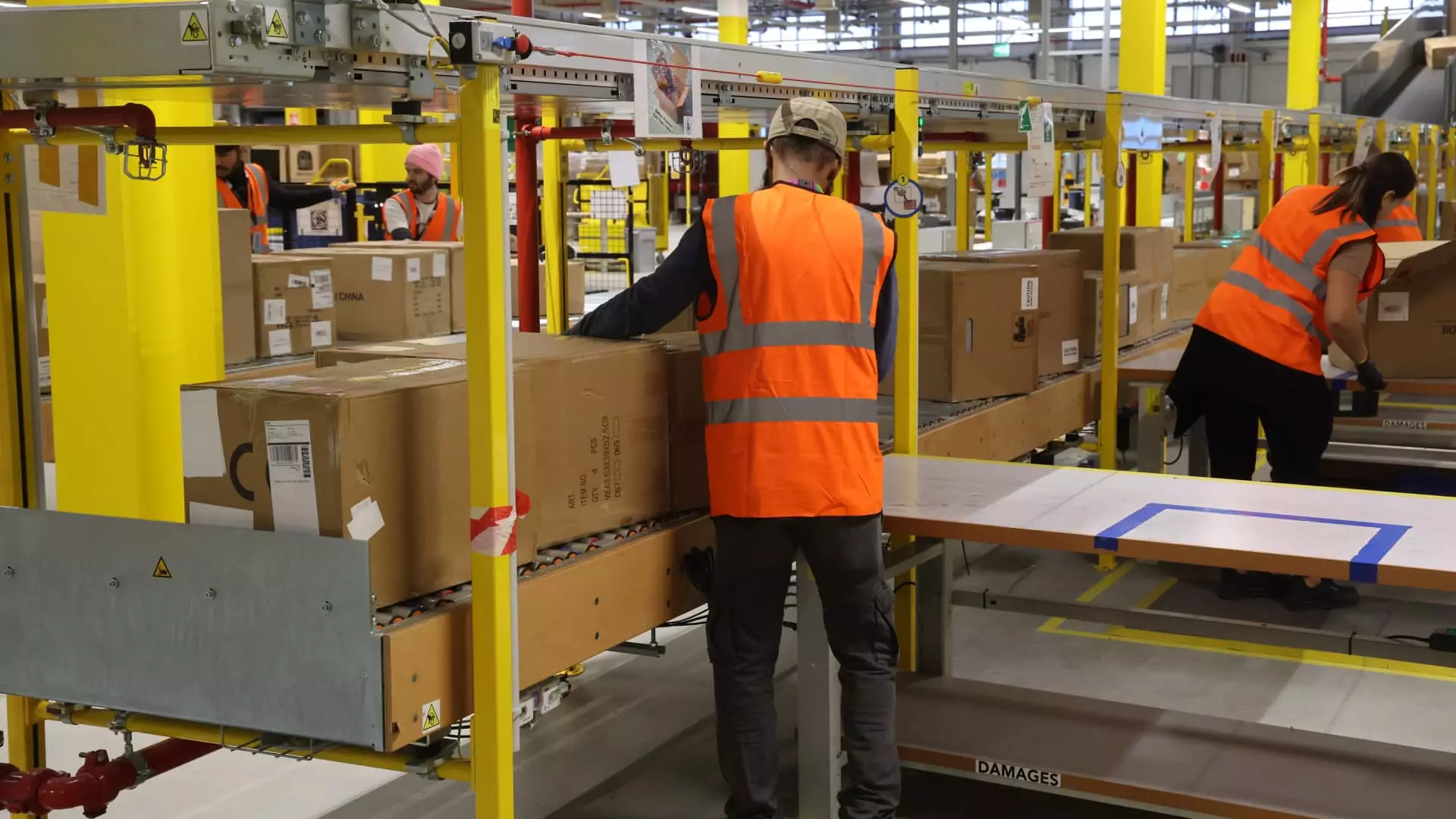Amazon’s recent announcement of reaching its millionth robot is a testament to the company’s relentless pursuit of automation. This milestone signifies more than just a numerical achievement; it represents a seismic shift in logistics and manufacturing paradigms worldwide. Amazon, by integrating such a vast robotic fleet across its extensive global network, positions itself at the cutting edge of robotic innovation. This move underscores a strategic vision—leveraging automation not merely as a cost-cutting measure but as a means to revolutionize operational efficiency.
However, this rapid expansion prompts critical questions about the true implications of such technological dominance. While Amazon claims that these robots work alongside humans to augment productivity, one cannot ignore the broader socio-economic undercurrents. The automation process, which originally aimed to expedite tasks like inventory movements, is now evolving into a comprehensive system that could fundamentally alter the nature of employment in fulfillment centers. The deployment of millions of robots paints a future where human workers may become passive overseers rather than active participants in daily operations.
The Double-Edged Sword of AI-Driven Efficiency
Amazon’s development and deployment of the “DeepFleet” AI model are central to their smart logistics ambitions. This AI system promises a 10% reduction in robot travel time, translating into faster deliveries and lower operational costs. While these are undeniably impressive achievements, the underlying motivator remains a concern—maximizing output while minimizing human labor. It demonstrates an unwavering focus on efficiency, but at what cost?
The promise of increased productivity often accompanies the narrative of technological progress, yet the human toll remains starkly overlooked. Automation advocates argue that these robots free humans from monotonous and physically demanding tasks, ostensibly creating new roles in tech maintenance, oversight, and advanced logistics management. Nevertheless, the reality is more complex. The recent history of AI implementation highlights a trend toward job displacements, not just in manufacturing but across many sectors. The expectations voiced by Amazon’s leadership and other industry giants suggest a future where AI and robotics take precedence, potentially shrinking the workforce even as corporate profits soar.
Contradictions in Amazon’s Workforce Strategy
There is an inherent tension in Amazon’s narrative about automation. On one hand, the company emphasizes that robots serve as collaborators that empower human employees—handling heavy lifting and repetitive tasks so that humans can focus on more skilled roles. On the other, high-level executives, including CEO Andy Jassy, openly acknowledge that AI will eliminate certain jobs, potentially reducing the overall size of the workforce.
This dichotomy reflects a broader industry dilemma. Amazon’s “next-generation fulfillment center” in Shreveport, Louisiana, signifies an innovative step forward but also hints at a paradox: automation requires more specialized roles in maintenance and engineering, which could lead to a reshuffling rather than an increase in employment. The net effect seems to be a transition rather than a straightforward growth story—it’s about replacing certain roles while creating others that demand high technical expertise.
The layoffs of more than 27,000 employees over the past two years further illustrate this trend. The data suggests that despite Amazon’s claims of job creation in AI and robotics, the overall workforce is likely to shrink, especially in roles susceptible to automation. The industry’s larger narrative is increasingly about how to balance technological progress with societal responsibility concerning employment.
The Societal Impact and Ethical Dilemmas
The surge of automation within Amazon and other tech giants throws up urgent ethical questions. Will the relentless pursuit of efficiency lead to widespread unemployment? Are these technological advancements truly creating a better, more prosperous future for everyone, or are they exacerbating economic inequalities?
Public perception reinforces these concerns. Surveys indicate that factory workers are among those most at risk of losing their jobs to AI. While Amazon claims these robots complement human workers, the reality of economic pressures suggests a future where fewer people are needed to fulfill roles that once required significant human effort. The promise of new opportunities in tech skills may not keep pace with employment reductions in traditional roles, particularly for those with limited access to retraining.
Moreover, the rush towards automation presents a paradox. Companies like Amazon tout their innovation, yet their statements reveal a pragmatic approach that leans heavily on cost-cutting at the expense of employment. As AI becomes more sophisticated—potentially manifesting in humanoid robots capable of mimicking human movement—the challenge becomes not just technological but moral. Society must grapple with the question: Will these advancements lead to a more equitable economic landscape, or deepen existing inequalities?
The Future of Work in a Robotic Era
Amazon’s bold automation strategy exemplifies a future where technology and industry intertwine more tightly than ever before. While these advancements bring undeniable benefits—faster deliveries, lower costs, fewer workplace injuries—they also demand a critical assessment of their long-term societal impact. The narrative should not solely revolve around productivity metrics. Instead, it should incorporate considerations for employment stability, economic fairness, and the ethical responsibilities of tech giants.
Yet, it’s clear that the trajectory of AI and robotics is unstoppable. Companies will continue to push the boundaries of automation, driven by competitive pressures and shareholder expectations. Amazon’s experience acts as a case study—highlighting both the dizzying potential of AI-powered logistics and the urgent need for policies that safeguard workers’ rights and livelihoods amid rapid technological change. The challenge ahead is for society to ensure that innovation benefits all, rather than becoming a tool that consolidates corporate power at the expense of everyday workers.

